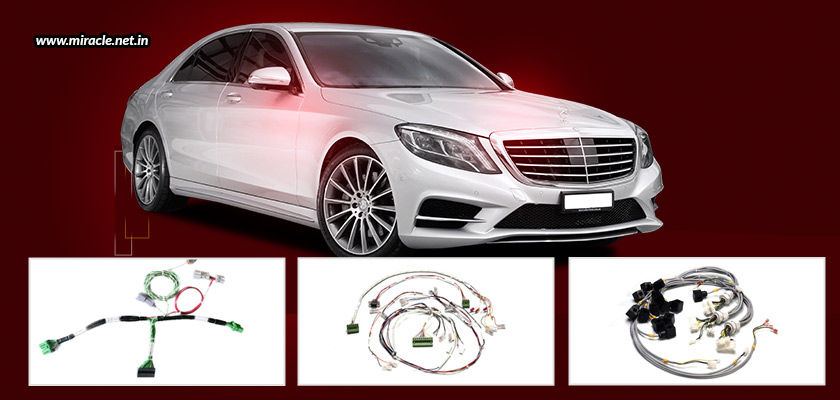The wire harness, an essential part of an electrical vehicle’s neural network, has seen a significant evolution in the automobile industry. This multi-decade journey has been characterized by notable breakthroughs and developments that have revolutionized the wiring of automobiles. The blog below explores the significant turning points and technological advancements that have influenced the development of wire harnesses in automobiles throughout history.
Early times: Simple circuits and cloth-bound wires
Cars were still in their infancy during the beginning of the 20th century, and electrical systems were crude. Lights and ignition systems were examples of basic electrical components connected by cloth-bound wires. The electrical circuits in cars were comparatively simple, but because the wiring was exposed, they were prone to damage.
1930s–1950s: The introduction of plastic insulation and pre-wired harnesses
Because of the concerns of damage to the wires due to exposure or restricted protection with cloth, plastic insulation started to replace cloth insulation in the 1930s, as it offered superior resistance to abrasion and moisture. With the introduction of pre-wired harnesses, vehicle dependability increased and the assembly process was streamlined. The standardized wiring systems that exist today have their roots in this historical period.
1960s–1980s: Electronics and connector standardization integration
When electronic components started to be incorporated into cars, things started to change dramatically in the 1960s. Because of this, more intricate wiring systems were required to support items like lights, safety devices, and electronic ignition. Standardization of connectors became essential for facilitating interchangeability and streamlining assembly procedures. Modular wire harness designs were also introduced around this time.
1990s–2000s: Multiplexing and computerization
Wire harnesses changed as computerized systems in cars became more prevalent in order to support an expanding network of sensors and electronic control units (ECUs). With the development of multiplexing technology, many signals were able to be sent over a single line. As a result, cars had fewer wires overall, which improved performance and reduced their weight.
Late 2000s to the Present: Advanced Materials, CAN Bus, and Electric Vehicles
The design and material of wire harnesses have improved recently. While precision is improved by sophisticated production techniques, durability is enhanced by high-performance materials. Data interchange is streamlined by the Controller Area Network (CAN) bus technology, which permits smooth connection between diverse car systems. Wire harness technology has been further impacted by the increase in electric vehicles (EVs). Electric motors, complex control systems, and large battery systems all require complex wiring in EVs. Specialized materials are needed for high-voltage wiring harnesses intended for electric vehicles to guarantee efficiency and safety.
Principal Developments and Innovations
Materials and insulation: The robustness and safety of wire harnesses have been greatly enhanced by material advancements, which started with early cloth and plastic, and progressed to high-temperature-resistant compounds. Reliability is ensured in the engine compartment, where temperatures can reach high levels, by materials resistant to heat.
Connection technology: The development of wire harnesses has been greatly aided by the standardization and advancement of connection technology. In order to provide a dependable connection for the duration of the vehicle, modern connectors are made to be simple to assemble, strong, and resistant to environmental influences.
Modular and customized designs: Wire harnesses may now be more easily adapted to various vehicle models and configurations, thanks to the trend towards modular and customized designs. This lowers expenses and assembly time by improving manufacturing and maintenance efficiency.
Data Communication Systems: The way electronic components communicate within automobiles has been completely transformed by the incorporation of data communication systems, such as the CAN bus. As a result, there are fewer wires overall, simplifying the wiring design.
Electric automobiles and high-voltage systems: A new era in wire harness technology has been ushered in with the introduction of electric automobiles. Specialized wiring is required for high-voltage systems to guarantee efficiency and safety. The specific needs of electric propulsion systems are met by advancements in insulating materials and design.
The unwavering quest of efficiency, dependability, and innovation is reflected in the development of wire harness technology in the automobile sector. Wire harnesses have evolved from basic cloth-bound cables to intricate, modular designs that support electric cars, and they are now an essential component of the contemporary car. Future developments in wire harness technology are expected to contribute to the creation of safer, more efficient, and technologically sophisticated automobiles as the automotive industry continues to change with changing car designs.
Miracle Electronics stands out as a major participant in the Indian car wire harness manufacturing market in this ever-changing marketplace. They offer solutions that readily integrate with the advancements in the industry by using cutting-edge materials, standardized connectors, and modular designs. As the automobile industry grows, Miracle Electronics is positioned to have a big influence on auto wire harness manufacturing in India as per how wire harness technology will advance in India and globally, thanks to its commitment to accuracy, personalization, and the highest industry standards. They are also in a good position to contribute significantly to the ongoing tale of innovation in the automotive wire sector because of their commitment to regional manufacturing, superior engineering, and adaptability.



